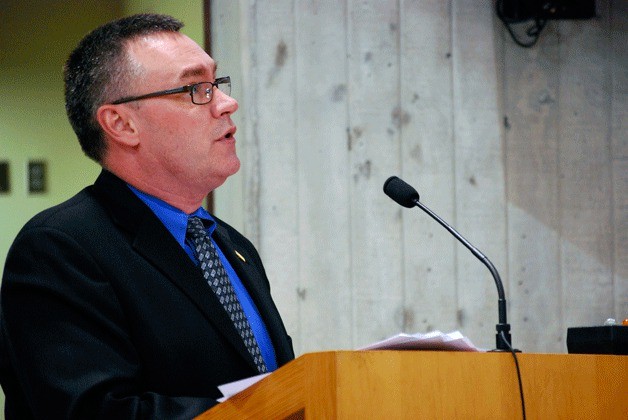To some, the outdoor dining and eclectic items that stack display racks throughout Downtown Winslow’s wide sidewalks is just another facet of Bainbridge’s vibrant culture.
To those traveling with baby strollers, however, it may look like an obstacle course.
In Monday’s meeting, City Manager Doug Schulze asked the council for policy direction to maintain Downtown Winslow’s pedestrian flow amidst sidewalk outdoor dining and merchandise displays.
The overall consensus of the discussion was that merchants have the council’s support to continue what they’re doing as long as there is a five-foot clearance for passerby to use the sidewalk.
“I think we should leave it up to the store owner in terms of the kind of display the storeowner wants and the kind of furniture that the store owner is going to put out there,” said Councilman Steve Bonkowski.
The increase in sidewalk retail over the past two years has prompted an overflow of comments to the city’s planning and public works departments.
Some residents, Planning Director Kathy Cook told the council, are concerned about handicap accessibility, the cluttered appearance and pinch points where pedestrians cannot walk side-by-side, which was a principle function of the Winslow redesign.
Other residents, Cook said, are pleased with the sidewalk retail and say that it adds vibrancy to the downtown commercial area.
During Monday’s meeting, Schulze asked the council for guidance in areas ranging from removing outdoor furniture during particular seasons to serving alcohol at sidewalk cafes.
The council agreed that little should be changed.
Although the city has a means to regulate alcohol service through the state Liquor Control Board, alcohol will continue to be served to customers at outdoor downtown restaurants.
Likewise, dining areas and display racks will be removed on the merchant’s terms, whether on a seasonal basis, during non-business hours or never.
“I think the merchant will do what is the best thing for them,” Bonkowski said.
In either case, Schulze said that business owners will likely have to fill out a short permit application that identifies the amount of sidewalk space they intend on using.
This would determine whether their plans for outdoor business will impede on downtown’s foot traffic and handicap accessibility, he said.
“Probably the simplest procedure is that the city provides forms that actually have a typical section of right-of-way already printed out, and then the applicant will draw in where they want tables and chairs … and put in the dimensions,” Schulze told the council.
To maximize usage, business owners can utilize spaces that don’t have much foot traffic anyway, Schulze advised, such as the perimeters where utility poles are set and just outside doorway entrances.
The city will review the application to make sure the appropriate five-foot clearance is accommodated before it is approved.
Private benches like those outside of Blackbird Bakery and That’s-a-Some Pizza were given the same weight as retail racks and cafes.
Councilman Val Tollefson at first suggested that permitting this type of street furniture may be a decision best left for the Design Review Board.
The idea didn’t last long, though.
“I’m a little nervous about adding a regulatory aesthetic value to that,” Councilman Roger Townsend said.
Mayor Anne Blair said that if the size of furniture is the issue with sidewalk clearance, than the permit application should be able to catch anything that is too large.
“Otherwise, I really agree that this is something that adds to everybody appreciating downtown for its unique storefronts,” Blair said.
The council agreed that their directives should apply to downtown as a whole rather than solely Winslow Way. It would extend from Ferncliff to Grow Avenue and to south Madison Avenue and Parfitt Way.
“We don’t know how that’s going to develop over time, and it wouldn’t inhibit anything by being applicable,” Tollefson said.



